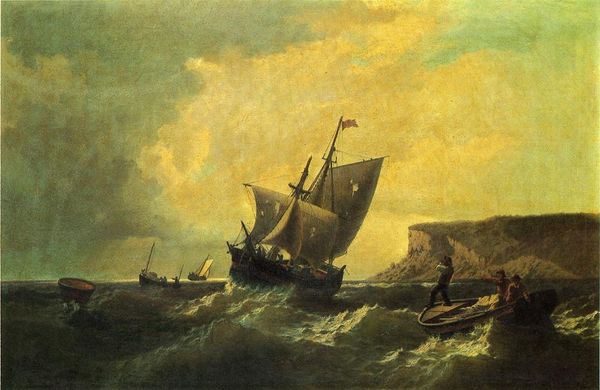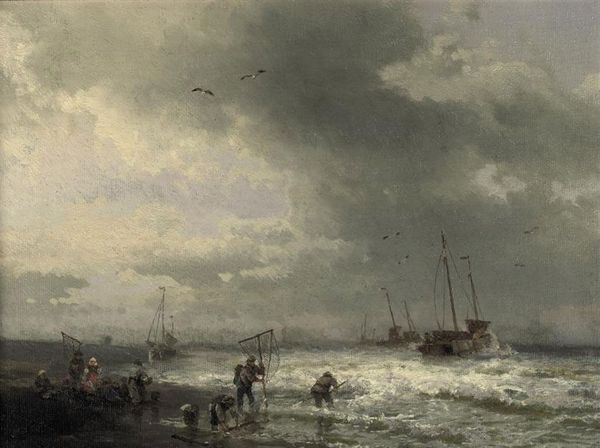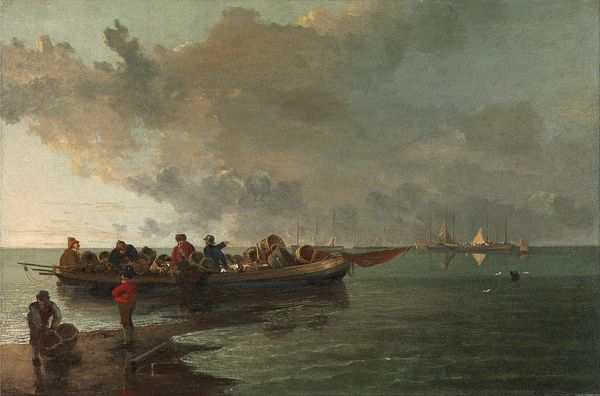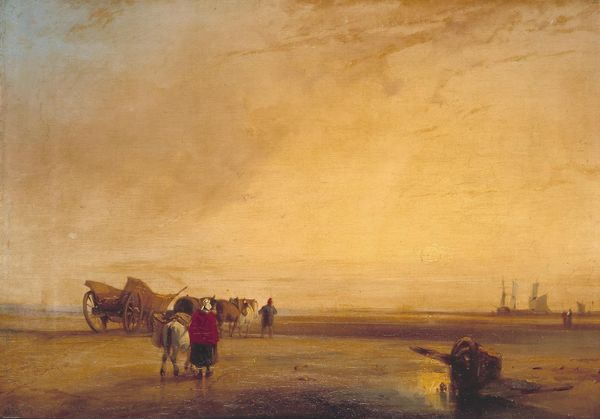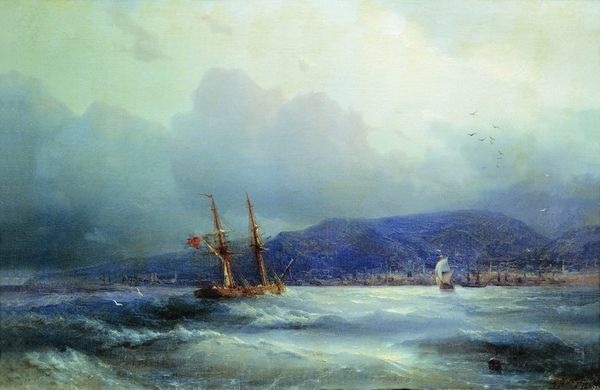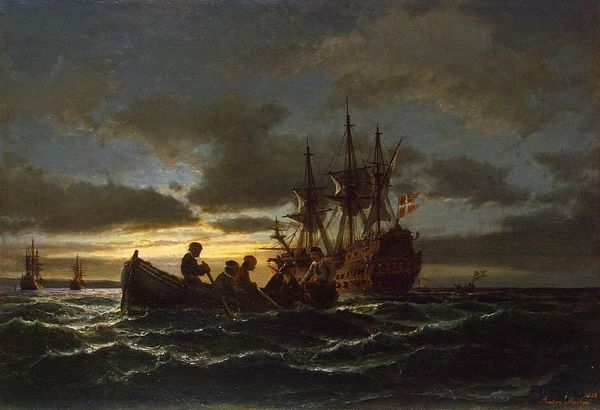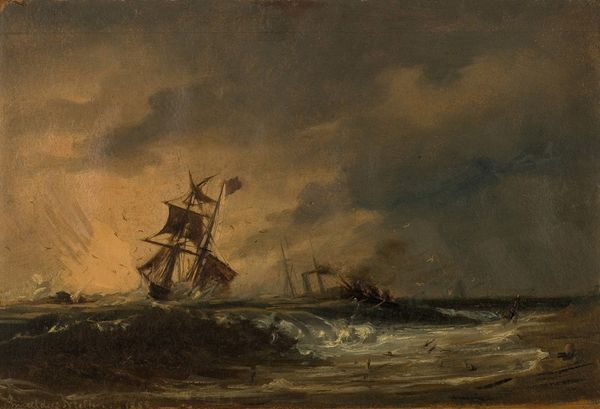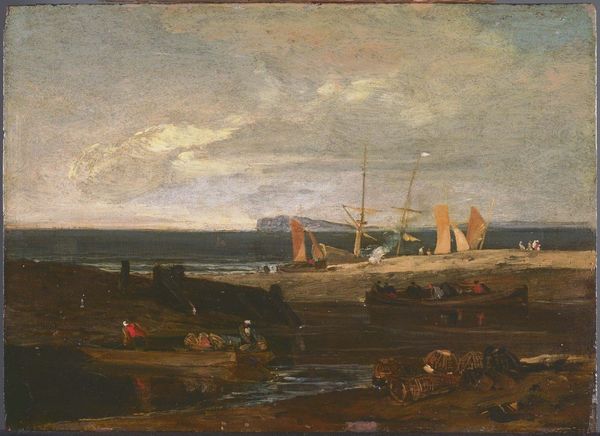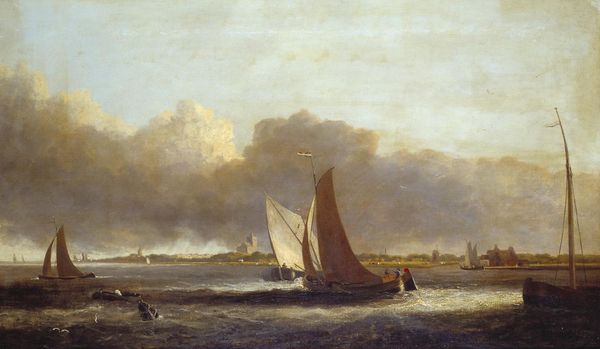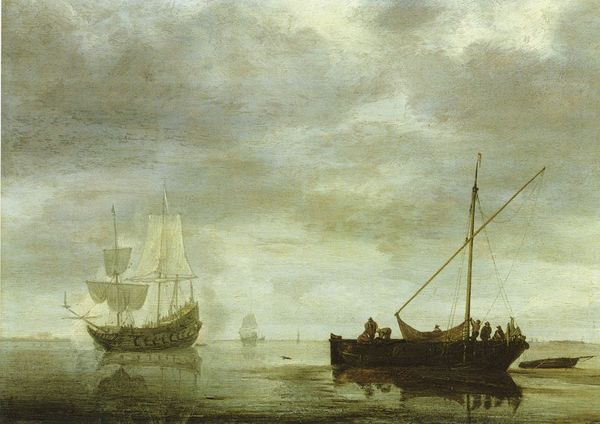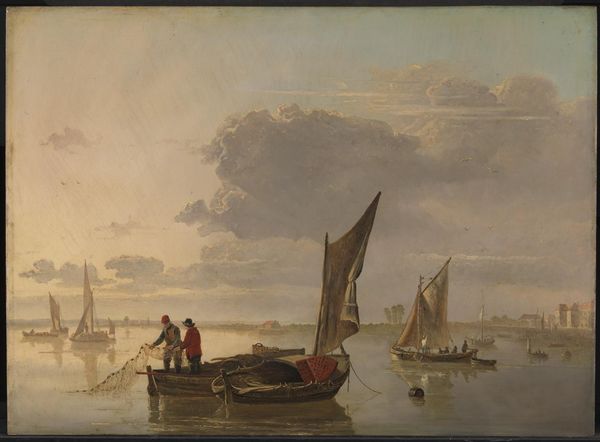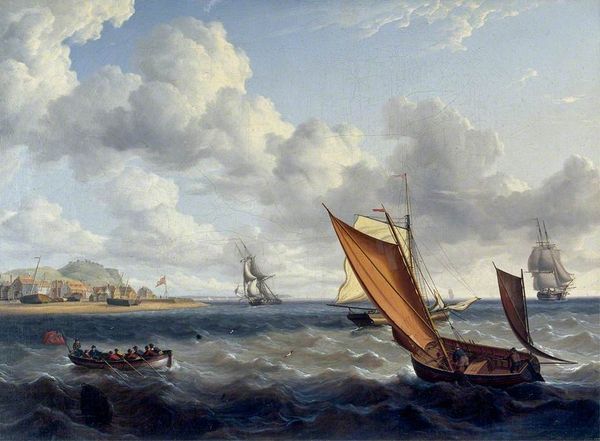
oil-paint
#
oil-paint
#
landscape
#
oil painting
#
romanticism
#
genre-painting
#
realism
Copyright: Public domain
Curator: Brrr, just looking at Andreas Achenbach's "Shore of the Frozen Sea," painted in 1839, gives me the chills. The oil paint captures a biting winter scene with a distinct Romantic sensibility. Editor: Yes, and immediately I see a landscape dominated by gray tones. The frozen sea mirrors the stormy sky, and there’s a group of figures clustered together, seemingly for warmth and protection from the elements. The entire mood is very subdued and still. Curator: Achenbach's work, especially pieces like this one, reflect the 19th-century interest in capturing nature's sublime power. But it's more than just the power of nature; there are also issues of resource access here, and social inequality suggested in the groupings and activities we see in this dangerous environment. The painting engages in a dialogue about class, gender, and survival. Editor: Indeed. Think about the historical context; what kind of political power was being portrayed and, in a way, consolidated when you displayed a nation dominating a force of nature through commerce, which, it seems is portrayed here? How did the dominant powers influence how these ports were presented to the world? What role did artists and art patrons play in shaping national identities at that time? Curator: Absolutely. Art institutions played a significant role. But looking at those huddled figures... the painting also portrays a sense of community forged by hardship. We can explore those historical undercurrents— how are these groups structured along racial lines? Does it tell a hidden tale about who has to work in this landscape, and who profits? What opportunities were available, if any, for a group struggling at the frozen edge? Editor: Right, and that element of risk is part of Romanticism too. It asks, who are we in this face of unforgiving elements? Beyond this are also institutional impacts—like changing economic policies during this period leading to port modifications. There’s so much depth beneath the surface when you think about this port being part of a system. Curator: Reflecting on it, Achenbach’s work is powerful because it’s not merely a scene. It's a cultural object reflecting layers of history, labor, and complex socio-political narratives that shaped both its creation and how it has been understood and continues to affect modern viewers today. Editor: I concur. It’s remarkable how one canvas can open such a multi-layered conversation about humanity’s place in a complex environment.
Comments
No comments
Be the first to comment and join the conversation on the ultimate creative platform.
